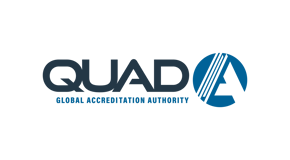By: M. Rossiter, D. Zargaran, A. Zargaran, T. Terranova, W. Rosenblatt, S. Hamilton, A. Mosahebi
SUMMARY
Background
Currently, safe practice in the UK aesthetics industry is largely reliant on self-regulatory bodies. If these bodies do not maintain high standards of safety guidelines and properly accredit practitioners, patient safety may be at risk. To-date, there have been no studies addressing cosmetic self-regulatory bodies and their websites on Google, the most commonly used information source. This study aims to map self-regulatory bodies on Google and evaluate their roles in the current UK aesthetics industry.
Method
We conducted a systematic search of Google Search results using eight search terms. The first 100 search hits were screened against our eligibility criteria. We searched each website of a self-regulatory body for their requirements to join registers, fees for membership, and features listed on the UK government’s criteria for an effective self-regulatory body.
Results
22 self-regulating bodies for the UK aesthetics industry were identified. Only 15% of registers required an in-person assessment of cosmetic skills to qualify for membership. 65% of self-regulatory bodies do not set clear standards and guidelines for practice. 14% of surgical and 31% of non-surgical bodies did not ask for qualifications. The mean membership fee was £331.
Conclusion
This study has uncovered important information about the self-regulation of the aesthetics industry in the UK. A significant majority of self-regulatory bodies do not meet best practice, potentially putting patients at risk. We recommend further studies screening a higher number of pages in a Google search in order to scope all other existing self-regulatory bodies, due to the creation of Google ‘filter bubbles’.
INTRODUCTION
Over the past few decades there has been rapid growth in the UK aesthetics industry 1. In the wake of the Poly Implant Prothèse scandal involving the misuse of industrial grade silicone for breast implants2, the UK Department of Health commissioned the Keogh Review3 aiming to provide a framework for standards of practice in surgical and non-surgical cosmetic interventions. This triggered a move to regulate the UK cosmetics industry in subsequent years, specifically the Botulinum Toxin and Cosmetic Fillers Children Act 20214 and the announcement of a new licensing scheme to regulate non-surgical cosmetic interventions in early 20225.
Despite this, regulations for cosmetic procedures are still largely lacking in the UK 6, 7, 8. As a consequence, there is a large reliance on self-regulatory bodies to oversee standards in aesthetic procedures. However, if these self-regulatory bodies do not maintain high standards of safety guidelines and properly accredit practitioners on registers through robust entry requirements and vetting procedures, the veil of perceived safety may be misleading to prospective users. To-date, there have been no evaluations of surgical and non-surgical self-regulatory bodies in the UK aesthetics industry that claim to regulate professionals performing cosmetic interventions. In this study we address this lack of evaluation and examine the cosmetics registration and regulation domain in the UK.
Section snippets
Method
A systematic search for surgical and non-surgical cosmetic self-regulatory bodies in the UK was conducted on Google Search on 15th November 2022. We chose Google Search for our search medium as 68%-70% of patients use the internet as their first point of call when searching for cosmetic providers 9, 10, and we hypothesise that self-regulatory bodies and registers of cosmetic professionals are most accessible to patients on the internet. As grey literature searches are a novel research method,
Results
We identified 22 self-regulating bodies for the UK aesthetics industry that matched our inclusion criteria (Table 1). 9 of these were for surgical aesthetic procedures and 13 of these were for non-surgical aesthetic procedures. We summarise the main functions of each self-regulatory body in Fig. 2, joining requirements in Table 3, the annual fee to enter the register in Table 4, and aspects of each self-regulatory body in terms of their ‘effectiveness’ in Table 5.
Discussion
This study provides a unique insight into the current UK aesthetics industry, focusing on the function and effectiveness of self-regulatory bodies. The aesthetics regulations climate is still at its infancy, with an abundance of information on websites accessible to patients that advertise unsafe cosmetic procedures. Rufai et al. 15 reported that 59% of providers in the top fifty websites of aesthetic providers were not compliant with the Keogh Review and CSWP recommendations. Gunn et al. 16
Conclusion
This study has uncovered important information about the self-regulation of the UK aesthetics industry: 85% of bodies do not require any in-person assessment and significantly more than half (65%) do not set standards and guidelines. It is questionable if these provisions can be considered a valid and authoritative self-regulation of a growing consumer-oriented medical industry. Our findings illustrate the necessity for more robust entry criteria upon application for membership of a cosmetic...
References (35)
- S.R. Rufai et al.
Journal of Plastic, Reconstructive & Aesthetic Surgery (2014)
-
E.G.M. Gunn et al.
Cosmetic websites Scotland: Legal or lurid
Journal of Plastic, Reconstructive & Aesthetic Surgery (2014)
-
N.M. Pantelides et al.
An analysis of the cosmetic surgery experience acquired through UK plastic surgery training
Journal of Plastic, Reconstructive & Aesthetic Surgery (2018)
-
B.G. Baker et al.
Journal of Plastic, Reconstructive & Aesthetic Surgery (2022)
-
Y. Xie et al.
American Journal of Otolaryngology (2021)
-
British Association of Aesthetic Plastic Surgery. (2019) Cosmetic surgery stats: number of surgeries remains stable...
-
V. Martindale et al.
The PIP scandal: an analysis of the process of quality control that failed to safeguard women from the health risks
Journal of the Royal Society of Medicine (2013)
-
Department of Health. (2013) Review of the Regulation of Cosmetic Interventions. Retrieved from...
-
Botulinum Toxin and Cosmetic Fillers (Children) Act 2021 c. 19. Retrieved from...
-
Gov.uk. (2022) Government to crack down on unregulated cosmetic procedures. Retrieved from...
-
Save Face. (2022) Laws and regulations for the non-surgical cosmetic industry. Retrieved from...
-
Health and Social Care Committee. (2022) Regulate non-surgical cosmetic procedures within a year to prevent...
-
M. Latham et al.
The regulation of cosmetic procedures: Legal, ethical and practical challenges
(2020)
-
P. Montemurro et al.
The Influence of Social Media and Easily Accessible Online Information on the Aesthetic Plastic Surgery Practice: Literature Review and Our Own Experience
Aesthetic Plastic Surgery (2015)
-
R. Nassab et al.
Cosmetic Tourism: Public Opinion and Analysis of Information and Content Available on the Internet
Aesthetic Surgery Journal (2010)
-
K. Godin et al.
Applying systematic review search methods to the grey literature: a case study examining guidelines for school-based breakfast programs in Canada
Systematic Reviews (2015)
-
T.M. Watson et al.
Community-Based Mental Health and Substance Use Services for People Leaving Prison: Equity and Inclusion Strengths and Limitations in Specialized Service Inventory Development
Community Mental Health Journal (2022)
At QUAD A, our goal is to be your go-to provider for accreditation – always striving to be an effective, efficient, and easy-to-work-with partner that values education, reliability, and communication.


